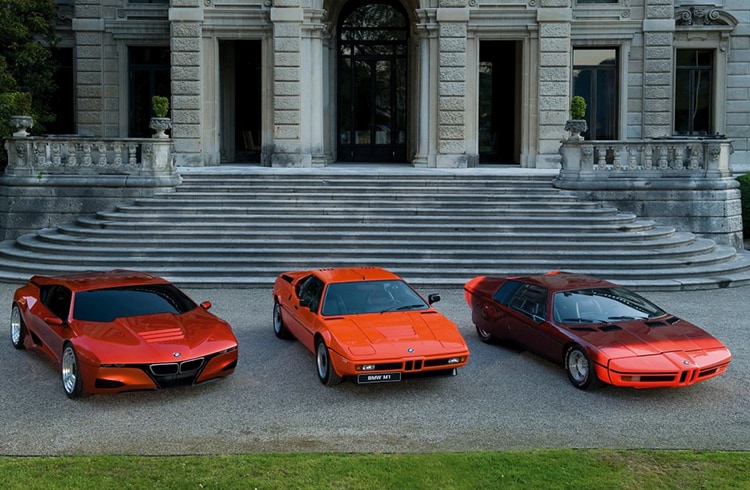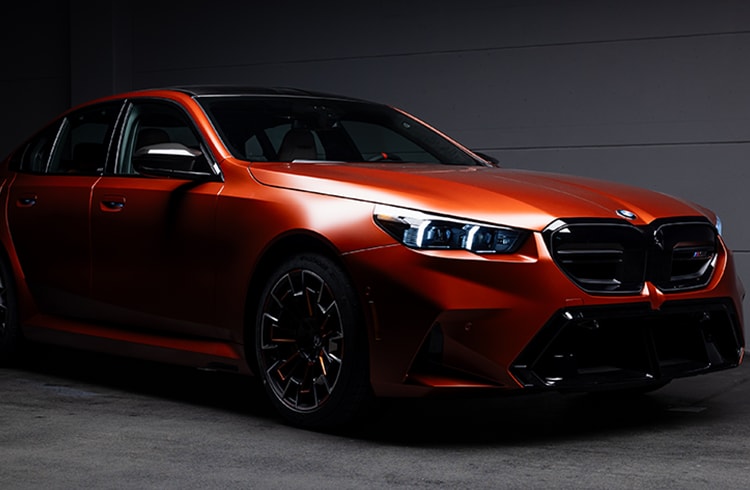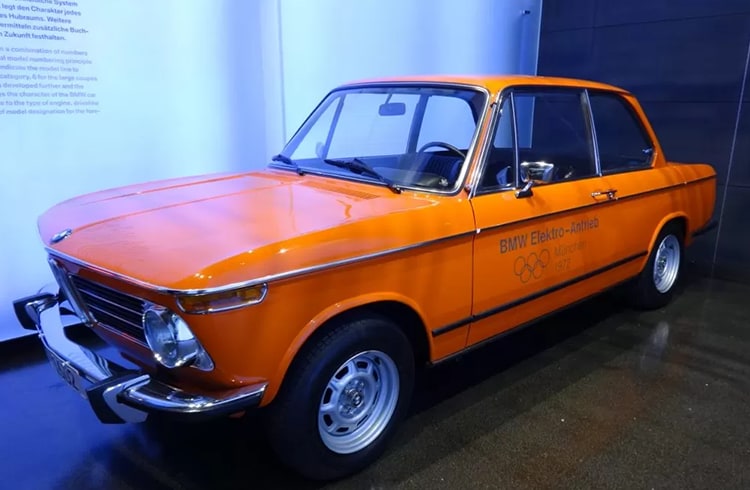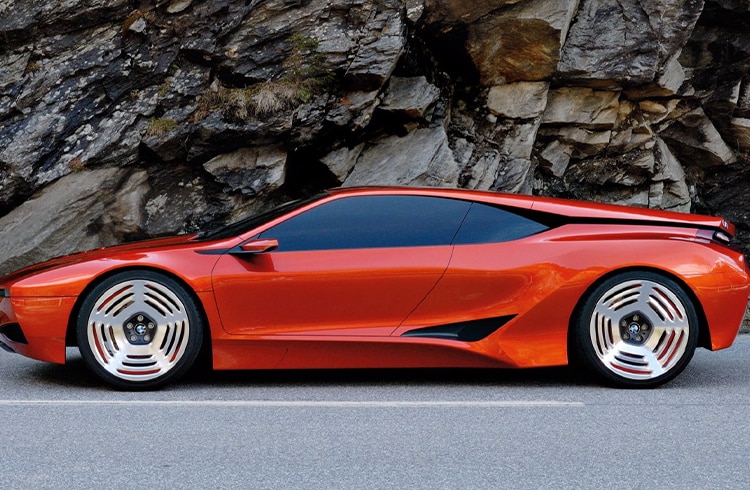
BMW Embraces Its Orange Vehicle Heritage
Fall is the perfect time to talk about all things orange. Pumpkins, leaves, sunsets, BMWs?
Yes. BMWs.
Inventory of orange BMW vehicles at HendrickCars.com.
BMW introduced its first 2025 BMW M5 in North America by selling a “Frozen Orange” Pebble Beach special edition at auction for $280,000 this past August. With funds going to support disadvantaged young people in California’s Monterey County, this one-of-one plug-in hybrid electric vehicle with 717 combined horsepower was a collaboration between BMW M and BMW Individual, in a color exclusive to this car.
While orange has never been a mainstream staple, it is still quite notable as popular vehicles from the muscle car era often stood out due to their unique color scheme. BMW sees it as an opportunity to distinguish itself, as many of its most significant versions throughout history donned the color in various shades – now beloved by collectors and enthusiasts worldwide.

Moving the Brand Needle
If there ever was a model line that defined the way forward for a particular brand – it was the BMW 2002. Introduced in 1968, the 2002 was the first time this “plucky underdog” manufacturer from Germany had combined the utility and luxury of a sedan with the agility of a sports car, essentially an enthusiast’s vehicle with practicality.
The color most associated with the BMW 2002 is Inka Orange. While numbers of how many were produced remain part of automotive lore, this fashionable hue of the ‘70s is a color many search for when expanding their collections. It was so mainstream at the time; BMW provided two Inka Orange 1600 electric vehicles to promote the brand as part of the 1972 Olympic Games opening ceremonies.
Named after its 113-horsepower, 2.0-liter inline four-cylinder engine, two-door mechanical design, peak handling and notable torque band, the original Bavarian 2002 sports sedans pushed 0-60 mph in 9.6 seconds. Later iterations such as the much-sought 1972 2002tii with its mechanical fuel injection and higher compression ratio, eventually bumped horsepower to 140 with 0-60 mph times in the 9.0-second range.
Between 1968 and 1975, BMW produced nearly 340,000 2002s in three different generations worldwide, launching the brand into the mainstream and earning praise from well-respected automotive journalists such as legendary David E. Davis.
In what many consider one of Car & Driver’s most famous stories, Davis boldly wrote, “To my way of thinking, the 2002 is one of modern civilization’s all-time best ways to get somewhere sitting down.”
He went on to say, “The BMW 2002 may be the first car in history to successfully bridge the gap between the diametrically-opposed automotive requirements of the wildly romantic car nut, on one hand, and the hyper pragmatic people at Consumer Reports, on the other.”
A precursor to the now-vaunted BMW 3 Series, the 2002 defined expectations for what a BMW should be. Luxury, performance and an absolute blast to drive with its famous sports-inspired underpinnings and slight understeer, it was the most complete vehicle in an era of big horsepower, big weight and even bigger footprints.
Additionally, special models such as the 170-horsepower 1974 2002 Turbo, a single-year production vehicle with 1,672 units produced, have become some of the most desired collectibles currently on the market today.

Famous In Orange
Singer-songwriter Frank Ocean once featured an orange E30 BMW M3 as the cover picture on his now-famous Nostalgia Ultra album. While the car was not his personal vehicle, Ocean was inspired to purchase an orange 1988 M3 for his collection, one of many cars he added from that era.
The E30 BMW M3 marked the beginning of the iconic M car. A high-performance evolution of the 3 Series, M cars have become synonymous with the enthusiast side of the brand. With the most pristine example cresting $250,000, the original M3 has established itself among collector car royalty.
The M car lineage dates back to 1986 when the factory rolled out the first M3 to compete in the German Touring Car Series Group A category. The original M3 maxed out its 2.3-liter, 4-cylinder engine with two overhead camshafts and up to 197 horsepower, featuring more aggressive styling and racing-inspired ground effects. The subsequent 1989-1991 Sport Evolution M3s outputted at 235 horsepower.
The original intent of the M model was to bring some of the brand’s racing prowess to the street. To qualify for the series, the manufacturer had to sell at least 5,000 road-going models in a 12-month period for on-track homologation to occur. It was perfect for the brand, as racing the German Touring Car Series meant that a manufacturer’s engineering and performance team could present the public with the highest form of its road-going vehicles.
Externally, wide fender flares, increased wheel width, more aggressive front and rear bumpers and a flatter and wider C-pillar improved the car’s aerodynamics over the regular 3 Series. Its design was distinguished and unmistakable. The transmission of the E30 is also impressive. Mated to a five-speed Getrag manual gearbox, this game-changer enhanced the vehicle’s drivability with a sense of road connection and precisely engineered shift points.
Today, the E30 M3 continues to serve as a catalyst for BMW’s high-performance legacy.
Or … Was This the Original M Car?

Inka Orange also made its way onto BMW’s original supercar - the M1. Some say the M1 was the “original” M car, as the factory made 399 units from 1978 to 1981, entering more than 50 into the FIA’s Group 5 (later Group 4) sports car racing series.
Split into four categories of competition, the M1 competed in the series for racecars with engines under 5.0 liters of displacement. Commonly international GT series included the ProCar Series, the World Sports Car Championship and the European Touring Car Championships.
Of course, the most famous M1 racecar was livered in bright … orange.
The M1, with its fiberglass shell produced by Italian designer Giorgetto Giugiaro and German coachbuilder Baur, was BMW’s first significant mid-engine platform. While BMW had success in international sports car racing with its aforementioned 2002, the M1 made a statement about the brand’s ability to build a supercar.
In 2008, Chris Bangle wanted to pay homage to the M1 by building a one-off concept vehicle. In celebration of its 30th anniversary, the stunning prototype’s design brought a modern flair to the iconic car. While the modern design language was very contemporary, its combination of smooth and angular lines revealed an unmistakable resemblance to the original.
It too, carried the primary color of orange.
Happy Fall Motoring!
 AdChoices
AdChoices